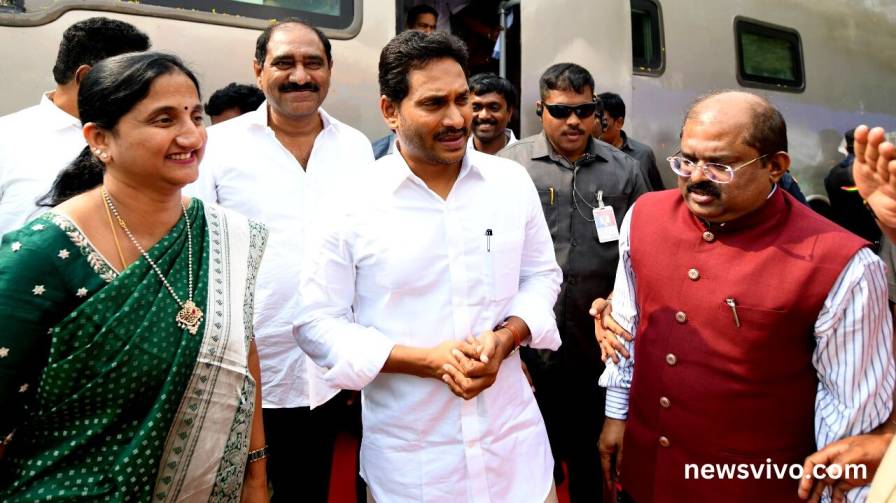Pension_Senior officials in the Union government are seeing merit in the demands of workers who entered service after January 2004 and are part of the New Pension System where their contributions are defined but benefits depend on the market.

Andhra Pradesh Pension Scheme
At least four Opposition-ruled states have already switched back to the Old Pension Scheme which offers defined benefits, and the BJP-Sena (Shinde) coalition in Maharashtra is not opposed to it.
Although the YSR Jagan Mohan Reddy in Andhra Pradesh has proposed a new model, there are conversations about it even though no proposal has yet been placed on the Union Finance Minister’s desk. The OPS (defined benefit) and NPS components of this approach are what have drawn officials in the Union government’s attention (defined contribution). In doing so, it provides two alternatives for “defined benefit” and requests a monthly “defined contribution” from the employees.
The underlying concept of this scheme is sound, but the Andhra government has purposefully overstated the NPS’s rate of return, according to a top government official.
So what is the model of the Jagananna government? The GPS, which stands for “Guaranteed Pension Scheme,” is a catchy name for it. If employees contribute 10% of their basic pay each month and the state government matches it with a 10% contribution, they would get a guaranteed pension equal to 33% of their last collected wage. If they are ready to contribute a higher 14% of their salary each month, which will be matched by 14% of government contribution, they can receive a guaranteed pension of 40% of their last received wage.
State government representatives said that the Union Finance Ministry had been contacted on this approach. Since official permission is not necessary, none has been requested. However, representatives of the Union administration claimed that although the idea “is fascinating,” further research is necessary.
The Andhra government may be providing several freebies for all relevant stakeholder groups, but it is evident from its evaluation of the OPS that it is not practical and cannot be put into practise. Its figures actually indicate that the state’s budget outflow for wages and pensions will more than quadruple to Rs 1,85,172 crore by 2023, from Rs 76,590 crore now. An official noted that if OPS is reinstated, it will have a negative influence on future generations.
The Andhra government refers to the NPS as the Contributory Pension Scheme (CPS), and it portrays an unfavourable picture of the pension benefits that the employees would get. It asserts that employees will only receive 20% of their last drew wage as a monthly pension due to lowering bank deposit rates in India and declining government returns in Western nations. The state additionally asserts that as compared to the CPS, the pension payment under its proposed guaranteed plan would be 70% greater under its GPS.
Why this model is efficient
It is true that the old pension system is financially unviable, but political parties are divided on whether it is also a wise political move. The Jagan model makes a bold assumption that a guarantee, even if it doesn’t cover 50% of income, may be feasible while acknowledging that states can’t go back to the past.
The return under the NPS is around 9.5 percent, according to officials in the Union government and the Pension Fund Regulatory and Development Authority, and the average monthly pension for government employees under the NPS may be at least 40% of their last drew income. Yes, it might not be 100% guaranteed, but this issue can be creatively solved, according to one official who wished to remain unnamed.
According to authorities, the innovation might take the shape of the Central government making up the 10% difference in returns between the NPS and the previous defined benefit pension plan or the OPS. This is a potential fix, the official added. This could also be achievable by raising the amount of the government’s monthly payment to the New Pension Scheme.
For instance, the Central government increased its pension contribution from 10% to 14% of their base pay with effect from April 1, 2019. Only 10% of the contribution came from the employees. But individuals who joined the government between January 2004 and March 2019 were miffed about it since it meant their pension funds will not increase as much as those who joined on or after April 1, 2019.
According to Union government officials, if NPS returns are around 9-10% over a 30-year period, the Centre can increase its portion of the fund’s contribution even higher, bringing the final payout to roughly 50% of the last collected income. Another official said that this is all “loud thinking today” and that it may attract the attention of the political establishment just before the Lok Sabha elections.